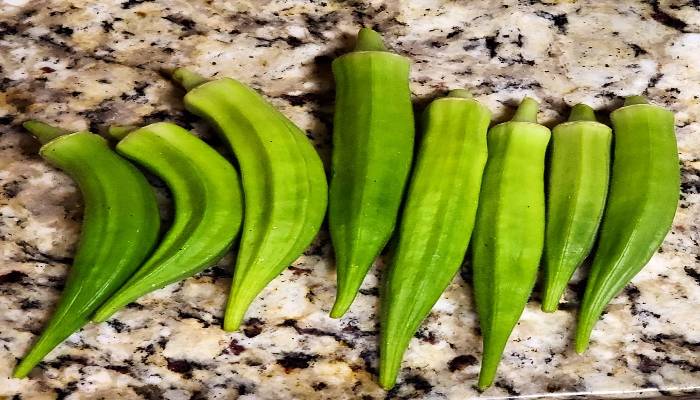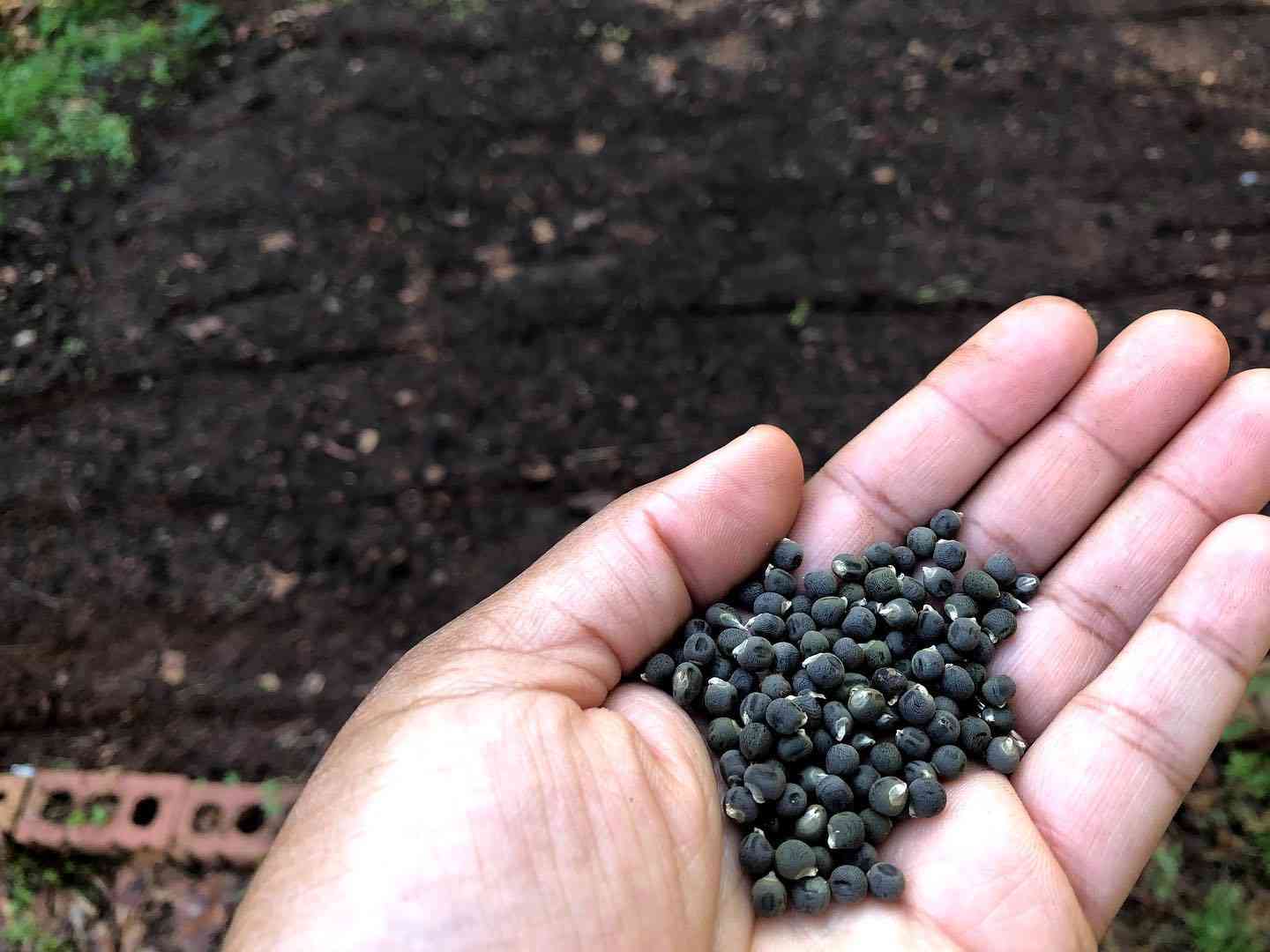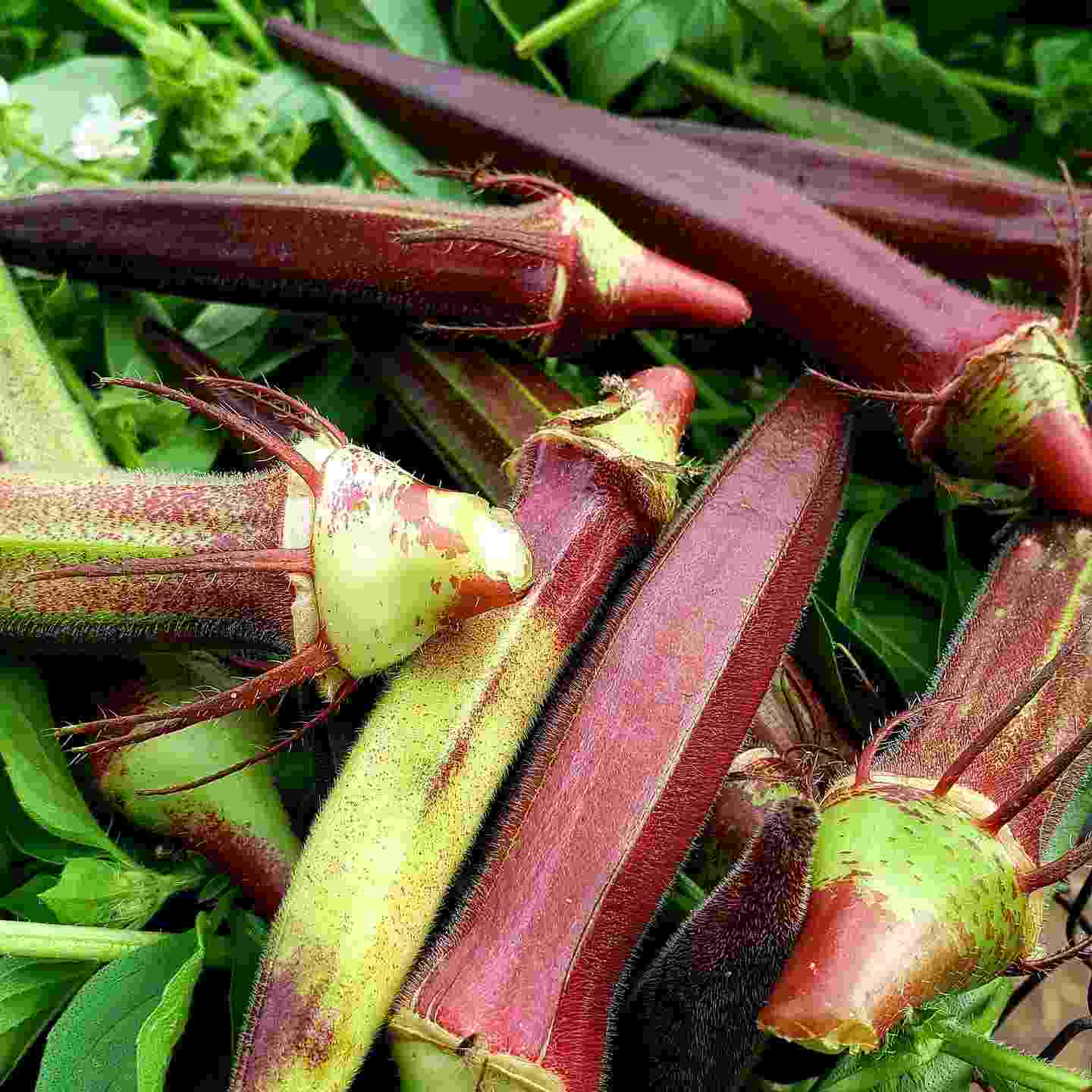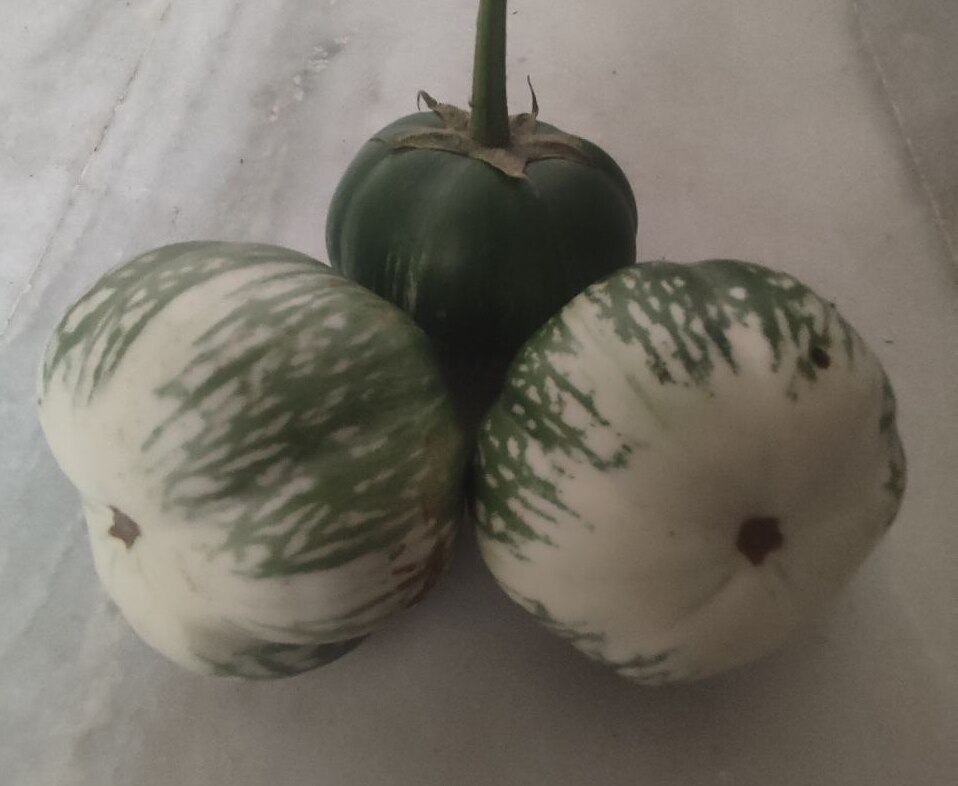
Okra, also known as Ladies’ fingers or Bhindi, holds a special place in the heart of Indian cuisine.
If you’re just dipping your toes into the gardening world, okra is your new best friend. It’s a quick grower and simply loves the sun and humid weather. And the best part? You don’t need a big space to grow it.
In this blog post, we’ll take you on a simple journey about growing your own okra. From picking the right type of Okra plant, to the right time to pick the okra pods from the plant, we’ll guide you through it all.
Choosing the Right Varieties
Okra is a versatile plant with numerous varieties, each unique in its size, colour, and growth speed, giving gardeners a delightful range to choose from.
Here are some okra varieties that are good for growing at home:
- Red Heirloom Okra: While most okra types are green, the red okra variety stands out with its bright, crimson pods. Red okra is known for its tender pods that have a more delicate flavour compared to their green counterparts. The plants themselves are tall, often reaching heights of 4-6 feet, and the attractive red pods can reach a length of 4-6 inches.
- Clemson Spineless: If you don’t want to deal with the pods’ tiny spines, then opt for ‘Clemson Spineless’ which, as its name suggests, produces spineless pods. The ‘Clemson Spineless’ is a popular variety of okra that gardeners love for its ease of handling. The plants are compact, growing to about 4 feet tall, making them perfect for smaller garden spaces.
- Elephant Tusk Okra Seeds: The ‘Elephant Tusk’ is a distinctive heirloom variety that originates from Kerala, India. The Elephant Tusk okra is known for its extremely long pods that can grow up to 10-12 inches, mimicking an elephant’s tusk’s length and shape. Despite their length, the pods remain tender and flavourful, making them a versatile addition to your kitchen.
Do take a look at our wide selection of okra seeds – you might just find the perfect match for your garden.
Preparing the Garden
It’s a good idea to clean up the portion of the garden where you’ll be planting your okra seeds. You want to get rid of any weeds, stones, or other stuff that could get in the way of your okra’s roots or mess with the soil drainage.
Next, you’ll need to loosen the soil a bit to make it easier for air and water to reach the roots. So grab a garden fork or a tiller, and get to work loosening the soil. Try to go at least 8 inches deep – okra likes to stretch its roots out.
And finally add a big heap of organic matter to your soil – stuff like compost or well-rotted manure. This not only makes your soil healthier, but also helps it hold onto water better, which your okra will love. Mulch is also a good idea – it helps keep the soil moist and keeps weeds at bay.
Sowing Okra Seeds

Soaking your okra seeds overnight speeds up the germination process. With a good soak, your okra seeds should sprout in about four days. If you sow seeds without soaking, it’ll take them a bit longer to get going – around 7 to 10 days.
You can sow the okra seeds straight into your garden, or you can start them off in trays or pots and transplant them into the garden later.
Direct Sowing
Choose a spot in your garden that gets plenty of sun. Poke a hole in the soil about an inch deep, drop in your soaked seed, and cover it up with soil. Leave about a foot of space between each seed to give your okra plants room to grow.
Raising Seedlings
If you prefer raising seedlings, fill a tray or pot with good quality potting mix and sow the soaked okra seeds about an inch deep. Once your okra seedlings are a few inches tall and have a couple of leaves, they’re ready to transplanted into your garden. Just be gentle when you transplant them – okra seedlings don’t like rough handling!
Essential Care and Maintenance
Watering
When it comes to watering, okra plants are pretty low-maintenance. They like a good drink during the growing season, but then they’re happy to dry out for a day or two. They’re tough little plants and can handle a bit of drought, but if you want a bumper crop of pods, try to keep the watering consistent.
Pro Tip: Try to water your okra plants early in the morning or late in the afternoon when the sun isn’t too strong. And aim the water at the base of the plant, not the leaves. This helps to keep fungal diseases at bay, which can be a problem if the leaves stay damp.
If you’re growing okra in containers, just remember they’ll need a bit more water than their buddies in the ground. Containers dry out faster, especially on hot days, so keep a close eye on them.
Mulching
Mulching is a fancy word for covering the soil around your plants with stuff like compost or well-rotted manure. This helps the soil stay moist and keeps the weeds from popping up.
For your okra plants, put down a good, thick layer of mulch. This will also feed your plants as it breaks down, giving them a nice, slow release of nutrients.
Companion Planting
Okra plants, love hanging out with eggplants and peppers. They get along great and can help each other out, making the most of your space and giving you more veggies for your effort. Other good buddies for okra include cucumber, basil, and sunflowers.
Harvesting Okra

Just around two months after you’ve planted your seeds, you’ll start seeing the magic happen. This is when the fruiting season begins, which continues until the first chilly frost rolls in.
The best time to harvest okra pods is when the pods are about 8-10cm long. Simply use a knife to gently cut off the lovely deep green pods.
Nothing beats the taste of freshly harvested okra, so remember to eat them while they’re still fresh.
Pro Tip: Okra is what we call a ‘cut and come again’ crop. You see, the more you pick, the more it grows! So, make sure you visit your plants every 2-3 days. Regular harvesting not only gives you more okra to enjoy, but it also encourages the plant to grow new pods.
Common Challenges and Troubleshooting
Pests
Like any other plant, okra can be a tasty treat for creatures like nematodes, caterpillars, whiteflies, and even termites. These little critters can cause significant damage if left unchecked. Spraying your plants with neem oil or garlic water can help keep these pests at bay. And that’s not all, practices like companion planting and crop rotation can be quite beneficial too!
Moving into the later part of the growing season, you might notice some unwelcome guests called aphids. If your okra plant is still producing pods, it’s best to treat these pests with an insecticidal soap spray.
Diseases.
Verticillium wilt is one common disease you might encounter with okra. It causes the leaves to wilt and turn yellow. And if you’re in a tropical region, your okra plants might be more prone to powdery mildew. This disease causes different spots to appear on the leaves. There are natural solutions for these problems. For example, a milk and water mixture sprayed on the leaves can help combat powdery mildew.
Fungal problems are more likely to occur in areas with high humidity, or when the plants are too close together. To avoid this, make sure your okra plants have enough space to breathe. Proper spacing allows adequate airflow and helps prevent fungal growth.
Final Thoughts
Okra is a friendly plant and grows well in most regions. But if you’re living in a place that tends to get a bit cold, here’s a little tip for you – try growing your okra in container. This way, you can easily bring your okra plants inside to keep them warm and happy.
We sincerely hope this blog post has sparked a little something in you to give okra a place in your garden this year. After all, there’s nothing quite like growing your own veggies, right?
We’d absolutely love to hear your thoughts on growing okra. Got any tips, hints, or comments to share? Or maybe you want to tell us about your own okra-growing journey? Feel free to reach out. We’re all ears!




